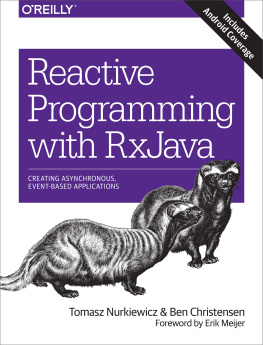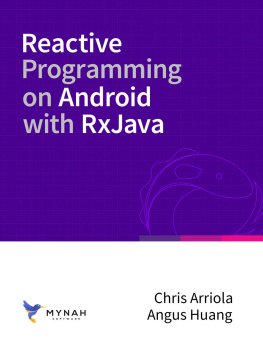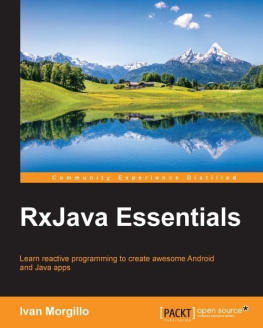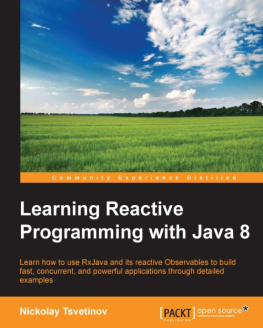Tomasz Nurkiewicz - Reactive Programming with RxJava: Creating Asynchronous, Event-Based Applications
Here you can read online Tomasz Nurkiewicz - Reactive Programming with RxJava: Creating Asynchronous, Event-Based Applications full text of the book (entire story) in english for free. Download pdf and epub, get meaning, cover and reviews about this ebook. year: 2016, publisher: O’Reilly Media, genre: Computer. Description of the work, (preface) as well as reviews are available. Best literature library LitArk.com created for fans of good reading and offers a wide selection of genres:
Romance novel
Science fiction
Adventure
Detective
Science
History
Home and family
Prose
Art
Politics
Computer
Non-fiction
Religion
Business
Children
Humor
Choose a favorite category and find really read worthwhile books. Enjoy immersion in the world of imagination, feel the emotions of the characters or learn something new for yourself, make an fascinating discovery.
- Book:Reactive Programming with RxJava: Creating Asynchronous, Event-Based Applications
- Author:
- Publisher:O’Reilly Media
- Genre:
- Year:2016
- Rating:5 / 5
- Favourites:Add to favourites
- Your mark:
Reactive Programming with RxJava: Creating Asynchronous, Event-Based Applications: summary, description and annotation
We offer to read an annotation, description, summary or preface (depends on what the author of the book "Reactive Programming with RxJava: Creating Asynchronous, Event-Based Applications" wrote himself). If you haven't found the necessary information about the book — write in the comments, we will try to find it.
In todays app-driven era, when programs are asynchronous and responsiveness is so vital, reactive programming can help you write code thats more reliable, easier to scale, and better-performing. With this practical book, Java developers will first learn how to view problems in the reactive way, and then build programs that leverage the best features of this exciting new programming paradigm.
Authors Tomasz Nurkiewicz and Ben Christensen include concrete examples that use the RxJava library to solve real-world performance issues on Android devices as well as the server. Youll learn how RxJava leverages parallelism and concurrency to help you solve todays problems. This book also provides a preview of the upcoming 2.0 release.
- Write programs that react to multiple asynchronous sources of input without descending into callback hell
- Get to that aha! moment when you understand how to solve problems in the reactive way
- Cope with Observables that produce data too quickly to be consumed
- Explore strategies to debug and to test programs written in the reactive style
- Efficiently exploit parallelism and concurrency in your programs
- Learn about the transition to RxJava version 2
Tomasz Nurkiewicz: author's other books
Who wrote Reactive Programming with RxJava: Creating Asynchronous, Event-Based Applications? Find out the surname, the name of the author of the book and a list of all author's works by series.








